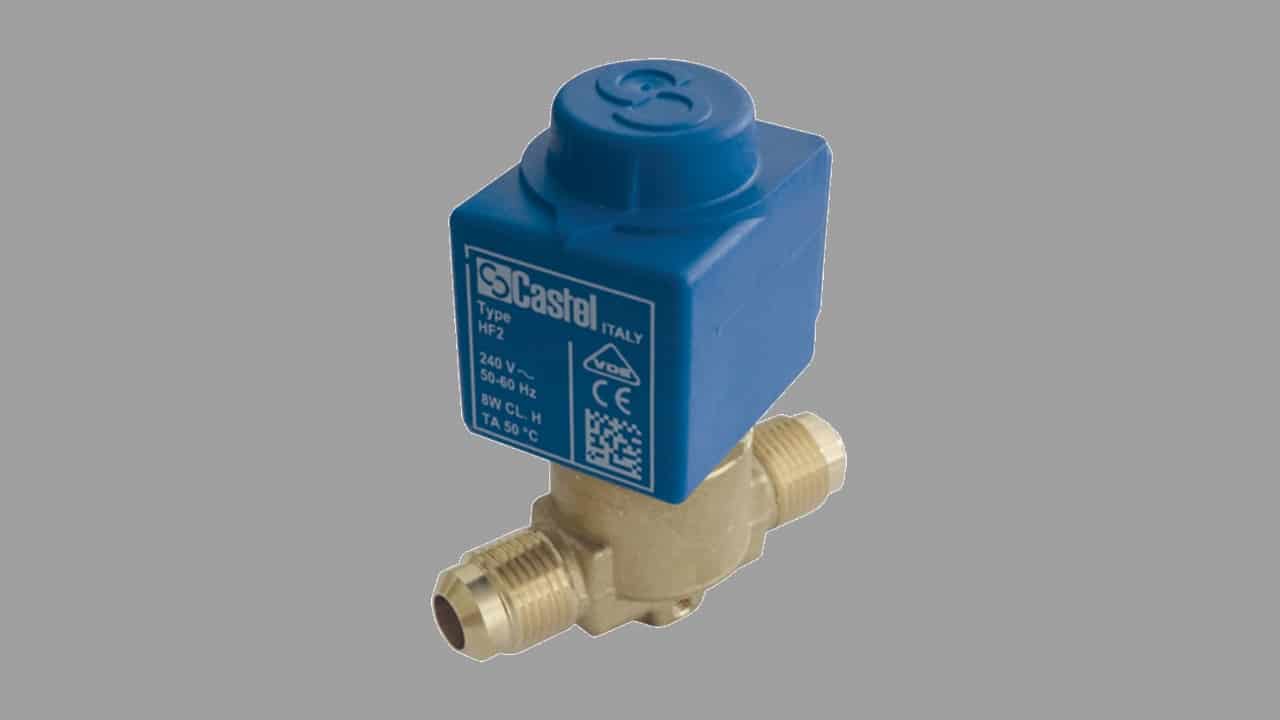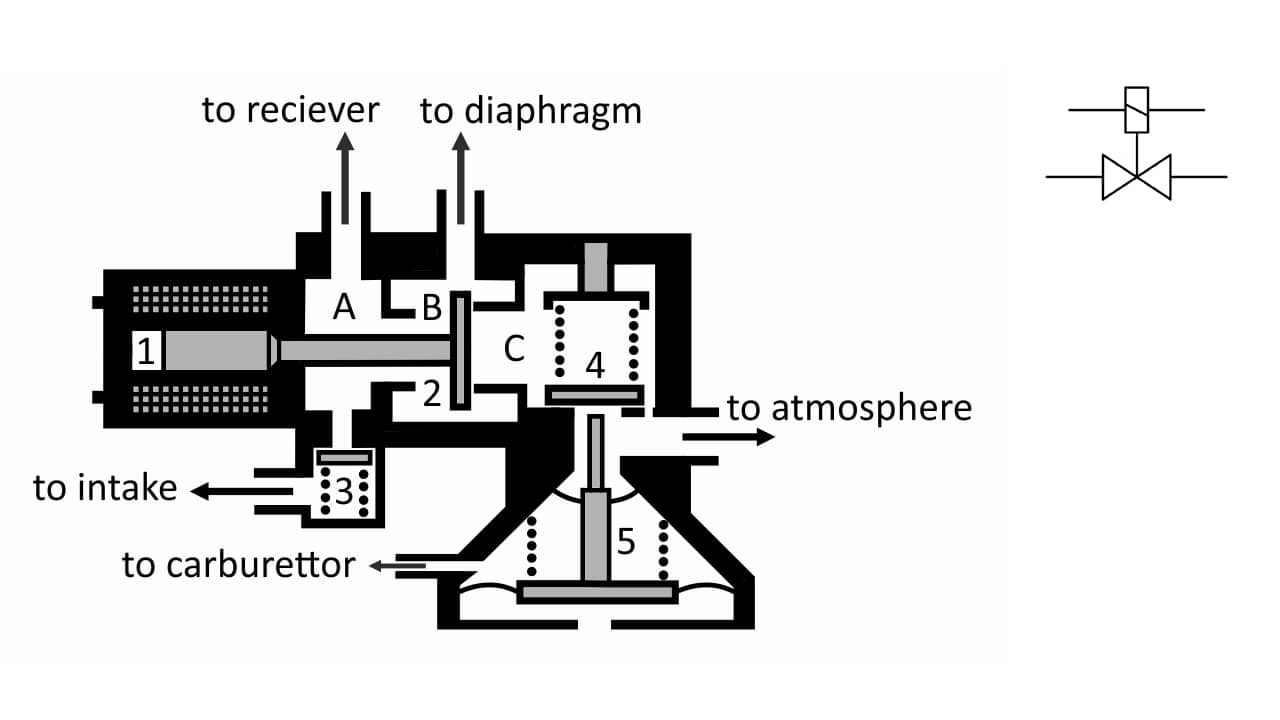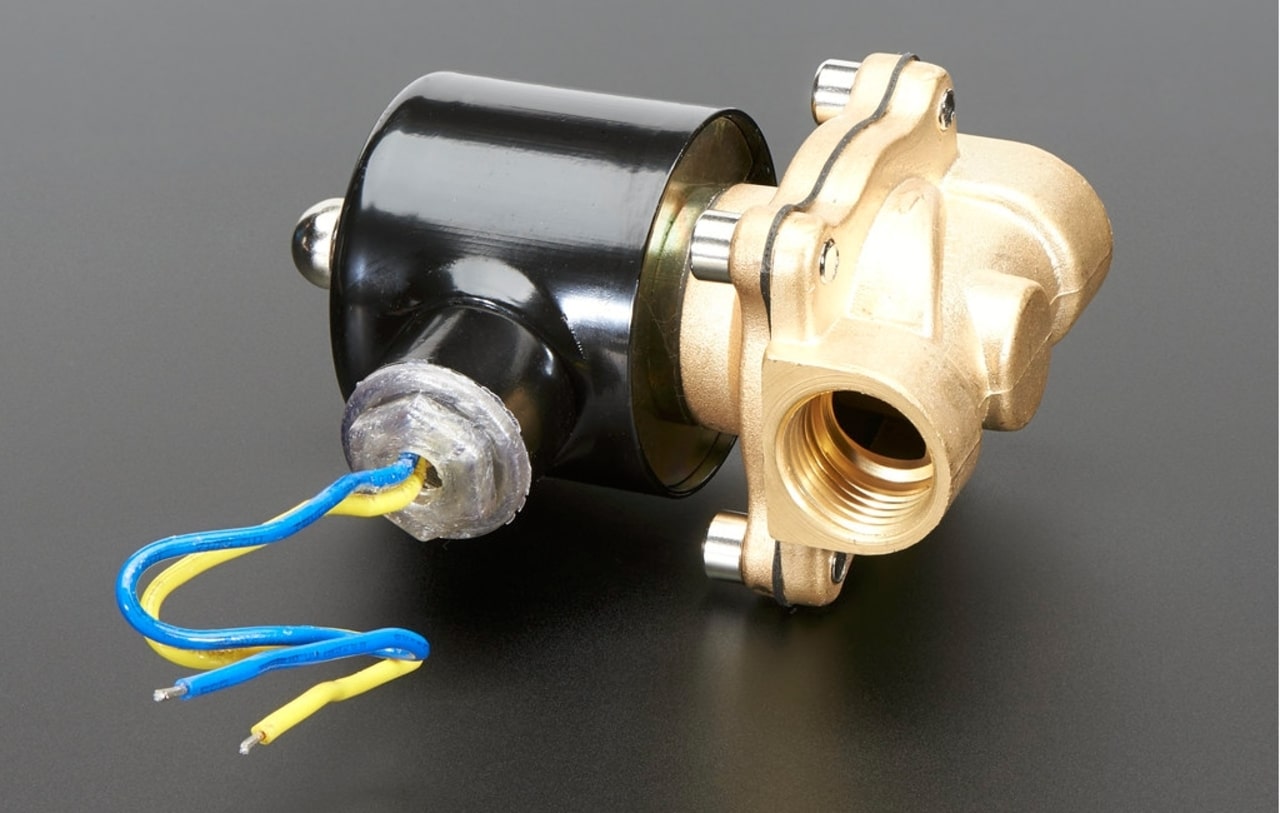
Surely you have heard more than once "solenoid valve" on some websites, books, and even on television. Many remember that mythical scene of Tom Cruise in War of the Worlds where he pronounces this term, or in the parody version Scary Movie 4. Well, this electrical component It can be used for a multitude of applications, and it works quite interestingly. Here you will learn more about him. Perhaps in some respects it reminds you of a relay, or other components already seen.
What is a solenoid valve?

Diagram of a valve for an internal combustion engine and its symbol
La solenoid valve It is present in a multitude of current systems, from refrigerant circuits to automobiles, through gas installations, etc. It is a device capable of being operated by means of thermostatic switches, relays, etc., that is, it is operated electrically. Its function is to control the flow of liquids or gases by opening or closing the valve to allow the passage or throttle the passage of said fluid. In other words, it is a kind of electrically powered faucet.
This type of valve consists of Two parts fundamental drive:
- Solenoid: It is a device in the form of an electrical coil (copper wire coiled and insulated) capable of creating a magnetic field inside. This field is very intense inside and weak outside, becoming an electromagnet capable of activating or controlling something (it attracts ferrous metals), in this case the opening or closing of the valve. In fact, this solenoid is often called an operator.
- Valve body: The operator will be mounted on it, and inside this body will be the opening or closing piston on which the operator will act. And it is made up of:
- Plunger (also called needle or stem): when the magnetic field is generated, the plunger will be attracted to the center of the solenoid and the valve opens and allows the fluid to pass. When no magnetic field is being applied, the plunger will remain closed and will not allow fluid to pass.
- Port: is a hole through which liquid or gas flows when it is open.
How does a solenoid valve work?
The solenoid valve has a Quite simple principle of operation. I have already commented on this in the previous section, but now let's see the step-by-step procedure:
- The solenoid valve remains closed when the solenoid is not being energized. In this way, neither a magnetic field nor an attractive force is generated in it. The weight of the plunger causes it to fall by gravity and close the hole, that is, the plunger is at rest and no flow is allowed.
- When the solenoid is energized, the needle that is mechanically attached to the bottom of the plunger will lift as the magnetic field lifts the plunger up and the plunger also pulls on the needle, exposing the hole and allowing flow.
However, some types of valves work slightly differently, such as those that use springs or springs to push the plunger to close the valve. This will allow the valves to be installed in positions other than vertical (acting by gravity).
If you wonder how can the solenoid be actuated, It's very simple. It is fed with an electrical current and that will generate the magnetic field. Of course, the power supply can be controlled so that it only turns on or off when needed. To do this, it can be done with a simple switch for manual on/off, or it can be a more complex and feedback system that detects certain conditions through sensors and is programmed to open or close the valve based on that.
Advantages
The solenoid valve has some advantages What should be noted:
- They are safe: Some other valves can generate leaks due to excess pressure, wear, installation faults, etc. And when working with fluids that are flammable, toxic, corrosive, etc., it can be very risky. In a solenoid valve, the inlet and outlet ports can be blocked more easily in an emergency.
- Quick action: Thanks to these valves, the flow can be let through or cut off in a matter of milliseconds. That allows for better flow control.
- Reliable: Being such a simple system, they are usually durable and hardly require maintenance. In addition, they are cheap and you can find them in different sizes to adapt to the pipes or tubes of hydraulic, pneumatic, etc. systems.
- Automatic: They eliminate the need for a manual drive to control flows, and that makes them more precise.
- Easy: to install and program.
Applications
If you are wondering what is a solenoid valve for, Here are some typical applications of these devices in hydraulic (liquid fluids) and pneumatic (gaseous fluids) circuits:
- Fluid pressure control
- Control of the temperatures involved
- Fluid Viscosity Control
Solenoid valve types
Another frequently asked question is what are the different types of solenoid valves? To answer it, let's see the types of solenoid valve:
- direct drive: This type of solenoid valves can work even under vacuum conditions. They are of limited use, being only 10% of the employees. And, in turn, they can be:
- N/C: Normally Closed, where energizing the solenoid causes it to open and not applying power causes it to remain closed.
- N/O: Normally Open, i.e. the reverse of the above, where a spring holds the valve open when the solenoid is not energized and pushes closed when energized.
- Internal pilot: in these cases, the solenoid will use the internal pressure to control the valve, so it will have to use less electrical energy than in the previous case.
- external pilot: similar to the previous ones, but use external pressure to promote valve movement. This also helps the solenoid so that as much power is not needed.
How to choose a suitable solenoid valve
When choose solenoid valve most suitable for your needs, you should take into account several factors:
- Circuit pressure: it is important to know what the pressure of the circuit in which the valve will be installed will be, since this can determine the type of valve used to save energy.
- Required speed: the speed at which the valve opens or closes is also another important factor, more so if needed in a system where precision in controlling flow is vital. For example, piloted are slower than direct action.
- N/C vs. N/O: This can also interfere with consumption. Generally, if the flow line is closed most of the time and only needs to be opened occasionally, an N/C is the right choice, as power to the solenoid will only need to be applied at certain times. In case the flow is normally open and only needs to be closed in some cases, then N/O is better.
- Flow rate: It is important to determine the flow to be handled to determine the size of the port or number of ports (holes).
- Size: it must also be suitable for installation in the system and compatible with the pipe thicknesses.
- Voltage: You will also find valves with different electrical characteristics, such as voltage. This should be tailored to what you need.
Of course, remember that you will need other extra accessories for your installation, such as the connections and the necessary electrical control circuit, pipes or hoses, etc.
Where to buy a cheap solenoid valve
Lastly, if you are thinking of buy a cheap solenoid valve, you can find them in some specialized stores, or on online sales platforms such as Amazon:






